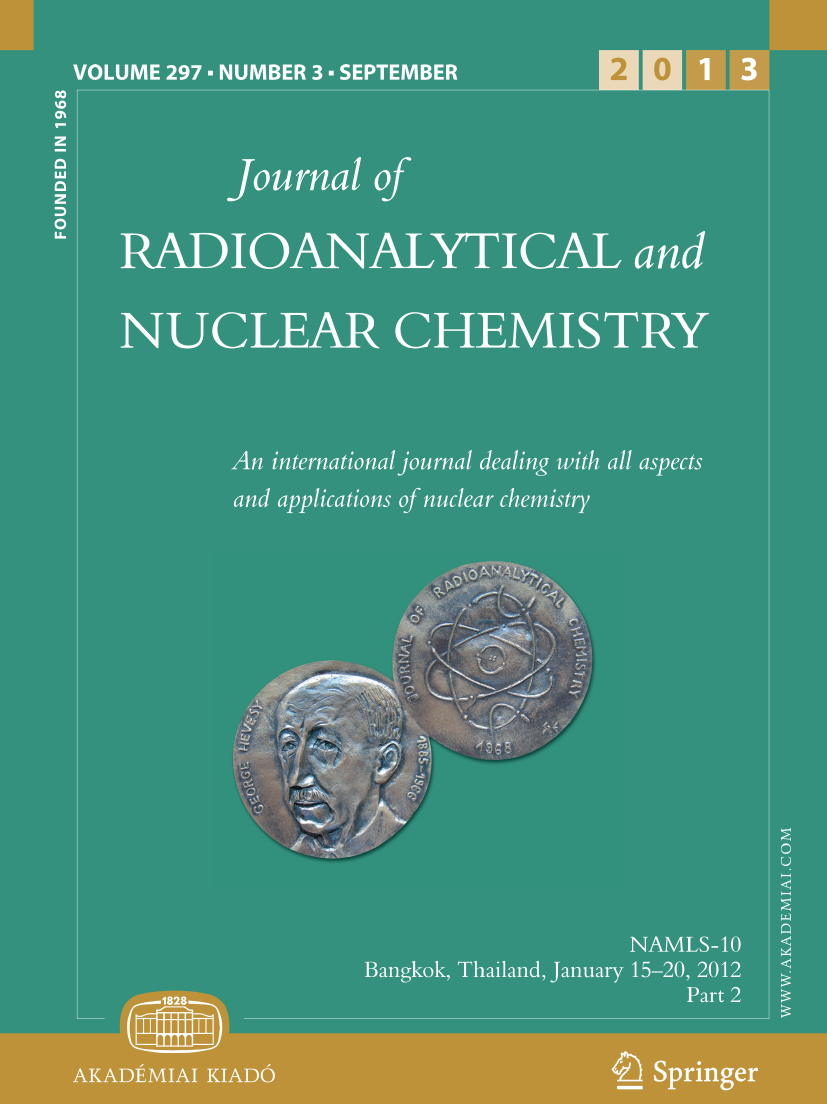Regularities of cesium sorption by fibrous sorbents based on transition metal ferrocyanides
Abstract
The patterns of cesium recovery under static and dynamic conditions with new ferrocyanide sorbents based on pre-prepared polyacrylonitrile (PAN) fiber by converting the latter into PAN-MnO2 or PAN-Fe(OH)3 modifications were studied. Optimal sorption conditions for the obtained sorbents were determined. The dependence of cesium recovery degree on the sorption time was characterized using kinetic models of pseudo-first and pseudo-second order, the Elovich model, and also dependence of the sorbent capacity on the equilibrium concentration of cesium in solution using Langmuir and Freundlich isothermal models. It was found that sorption equilibrium is achieved in 8–20 h. Maximum capacity is achieved at the equilibrium concentration of cesium in the solution of more than 1500 mg L–1. The output sorption curves were constructed, based on which the dynamic (0.88–3.67 mg g) and total dynamic exchange capacities (15.5–26.9 mg g) of the obtained sorbents were determined. The desorption and kinetics of cesium desorption have been studied, and the best desorption agents and the optimal desorption time have been found out. During the marine expeditionary research, the high efficiency of 137Cs recovery (> 80%) from large volumes of seawater using the obtained sorbents was shown.


 求助内容:
求助内容: 应助结果提醒方式:
应助结果提醒方式:


